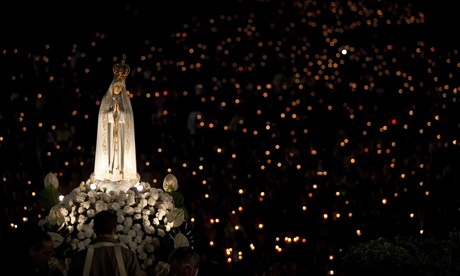The Vatican has updated its process for evaluating alleged visions of supernatural phenomena.
As far as the Catholic Church is concerned, claims of weeping and bleeding statues, mystical visions and stigmata are officially just claims until proven otherwise.
Furthermore – the faithful are never obliged to believe in these particular events, says head of the Vatican doctrine office Cardinal Víctor Manuel Fernández.
The new guide
The last time these processes (norms) were re-evaluated was in 1978. Those norms are no longer useful or viable in the internet age, a review found.
Fernández says the new guide has been under development since 2019.
It was designed to provide a more streamlined process for evaluating claims of supernatural phenomena, eliminating confusion and error without suppressing the action of the Holy Spirit he says.
Established shrines like Lourdes, Fatima, Aparecida and Guadalupe are widely-known sites of miracles and Marian apparitions.
There are also hundreds of supernatural reports every year.
The Holy See has officially investigated only six cases since the 1950s. Most “were either handled differently or just not handled at all” the Dicastery says.
New norms
The new norms say local bishops must investigate supernatural phenomena by creating an Investigatory Commission.
Such a commission must include one theologian, one canonist and one expert on the specific occurrence.
The commission must submit its judgment for approval to the Vatican’s doctrinal office.
Until the bishop receives the Vatican approval, he is not allowed to make any public pronouncement on the case.
The new norms envisage six main outcomes for cases being investigated.
The most favourable is that the church issues a noncommittal doctrinal green light, a so-called “nihil obstat”.
This means there is nothing about the event that is contrary to the faith, and Catholics can therefore express devotion to it.
Alternatively, the bishop might be more cautious if he’s aware of doctrinal red flags about the reported event.
The most serious envisages a declaration that the event isn’t supernatural or that there are enough red flags to warrant a public statement that “adherence to this phenomenon is not allowed”.
Vatican decisions
The Vatican will undertake its own investigations and reflections before confirming the bishop’s decision or issuing a new judgment.
It may also decide the case needs further study before any comment can be made.
It could be that while some issues remain, the case’s popularity among the faithful makes it difficult to discern, or that a group or individual is using the supernatural phenomenon for individual gain.
It might also be declared that there are critical issues in the phenomenon that need clarification or that the event is not of a supernatural nature.
The Vatican’s doctrinal department can at any time change its pronouncement on a supernatural event.
While the new norms prevent bishops and the church from definitively declaring phenomena as supernatural, the pope may “authorise a special procedure in this regard”.
Source
